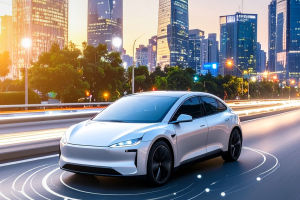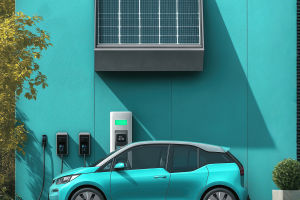By 2025, choosing between a hybrid vehicle and an electric car is more than a matter of taste—it's a strategic lifestyle decision. With the push for sustainable mobility rising globally, car buyers are drawn into the debate between these two green titans.
Yet behind the surface of eco-friendly promises lies a web of considerations: cost, convenience, range, maintenance, and environmental impact. For those navigating this modern auto crossroad, clarity is key.
Pure Electric Power
A pure electric vehicle (EV) operates solely on energy drawn from a rechargeable lithium-ion battery. These batteries are typically charged at home, office setups, or public stations. Pioneering networks like Electra now deliver ultra-fast charging, adding up to 400 km of range in just 20 minutes—a game-changer for longer drives.
The average range of EVs today lies between 200 km and 600 km, depending on the model and driving conditions. What sets them apart is the complete absence of tailpipe emissions, whisper-quiet motors, and simplified maintenance—no oil changes, no spark plugs, and fewer moving parts. Add to that the benefit of lower charging costs, especially during off-peak hours, and EVs become a financially attractive long-term investment.
Hybrid Mechanics
Hybrid cars blend two technologies: a traditional internal combustion engine with an electric motor. This class includes two distinct formats:
HEVs (Hybrid Electric Vehicles) recharge their battery automatically while driving, requiring no plug-in access.
PHEVs (Plug-In Hybrid Electric Vehicles) can be manually charged to increase their limited electric-only range, typically around 50–80 km.
Electric Advantages
EVs present a compelling list of benefits:
Zero emissions, ideal for urban low-emission zones.
Cheaper energy costs than fuel.
Simplified mechanics mean fewer breakdowns and lower maintenance.
Renewable energy compatibility reduces overall carbon footprint.
Instant torque offers smooth, quick acceleration and a quiet ride.
Electric Drawbacks
Despite their appeal, EVs come with a few limitations:
Range variability—entry-level models may only cover 200–300 km per charge.
Charging strategy is crucial for long journeys.
Higher upfront costs, although often offset by eco-incentives.
Infrastructure dependence—rural or underdeveloped regions may lack sufficient public chargers.
Hybrid Strengths
Hybrid vehicles offer a convenient bridge between conventional cars and full electrics:
Extended range via gasoline backup—no charging anxiety.
Improved fuel efficiency in city traffic.
Familiar driving experience for those adjusting from traditional engines.
Reduced gas use on short, electric-driven trips.
Hybrid Shortfalls
However, hybrids are far from perfect:
Dual powertrains raise manufacturing and repair costs.
Mechanical complexity often leads to higher service expenses.
Emissions persist when operating on fuel.
Heavier build means more energy is required to move the vehicle.
These limitations challenge the idea of hybrids being a true sustainable solution for the future.
Usage Scenarios
Electric cars thrive in urban areas with growing charging infrastructure. Their quiet operation and emission-free profile align perfectly with city life. Public chargers, increasingly found in parking lots and workplaces, support daily commutes with ease.
For those traveling longer distances or in areas with sparse charging stations, plug-in hybrids offer backup via the combustion engine. Still, fuel dependency re-emerges during extended drives, lessening their green appeal.
Cost Breakdown
While hybrids may appear budget-friendly initially, the total cost of ownership often tips in favor of EVs. Government incentives for electric cars—such as subsidies, reduced registration fees, and tax breaks—can significantly reduce the sticker price.
Maintenance-wise, EVs hold the edge. With no oil, timing belts, or traditional engine components, service costs are lower and reliability is higher. Hybrids, by contrast, involve the upkeep of both engines, often leading to unexpected costs.
Final Verdict
While hybrids offer familiarity and flexibility, the future unmistakably leans toward fully electric vehicles. With improving technology, increasing affordability, and expanding infrastructure, EVs are becoming more practical and appealing with every passing year.
In 2025, the smarter choice for most drivers—especially urban commuters—is electric. It’s cleaner, simpler, and ultimately, a leap forward into a greener world.

